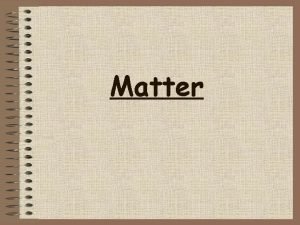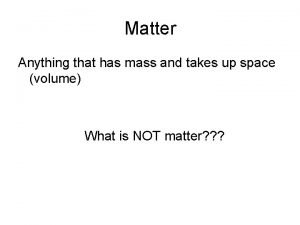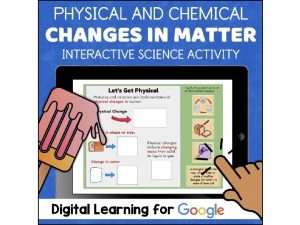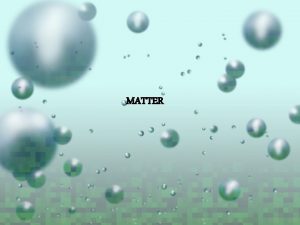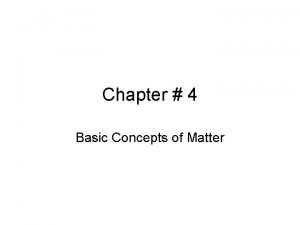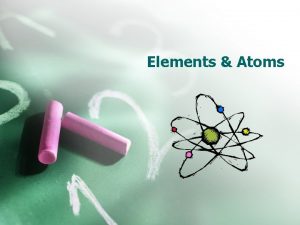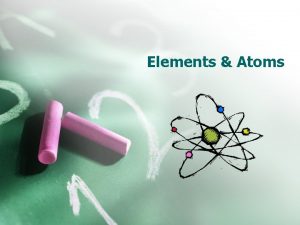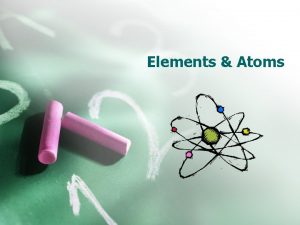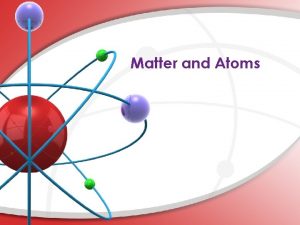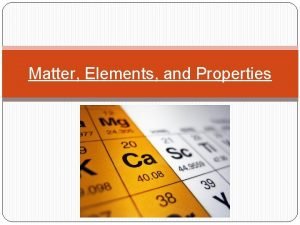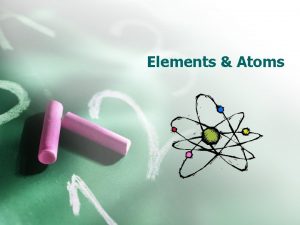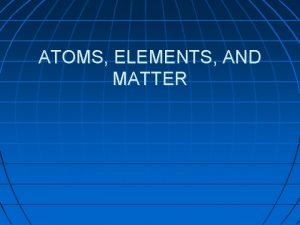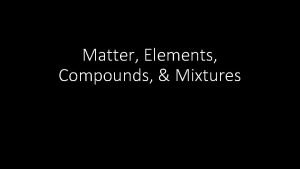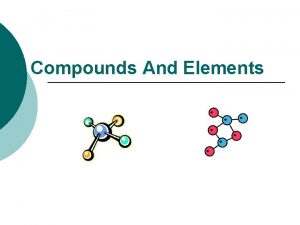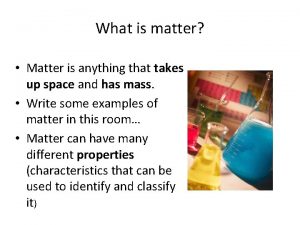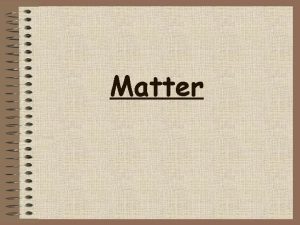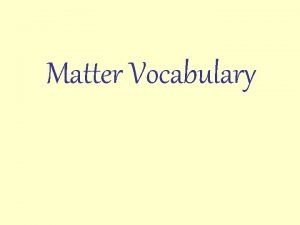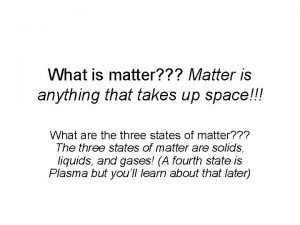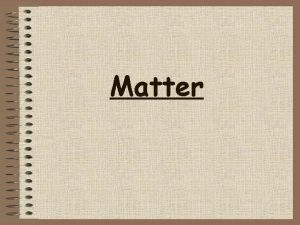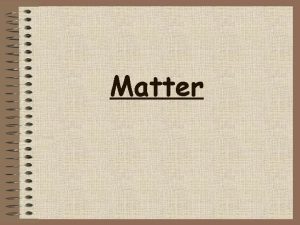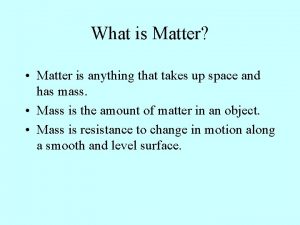Elements Atoms Matter is anything that takes up






















- Slides: 22

Elements & Atoms

• Matter is anything that takes up space and has mass. • All matter is made of atoms Created by G. Baker www. thesciencequeen. net

Elements • Elements are the simplest pure substance. – An element can not be changed into a simpler substance by heating or any chemical process. • The smallest particle of an element that has the properties of that element is called an atom. – An atom is the basic building block of matter. • There are more than one hundred known elements in the universe listed on the periodic table of elements. – These elements combine in such a way to create millions of compounds.

• • An atom has three parts: Proton = positive Neutron = no charge Electron = negative • The proton & neutron are found in the center of the atom, a place called the nucleus. • The electrons orbit the nucleus.

The Atom Nucleus Electron Protons Shell or Orbit Neutrons

Atomic Number: Number of protons and it is also the number of electrons in an atom of an element. Element’s Symbol: An abbreviation for the element. Elements Name Atomic Mass/Weight: Number of protons + neutrons. Periodic Table 8 O Oxygen 16

Look at Calcium • What is its element symbol? • What is its atomic number? • What is its atomic mass?

Look at Chlorine • What is its element symbol? • What is its atomic number? • What is its atomic mass?

Look at Boron • What is its element symbol? • What is its atomic number? • What is its atomic mass?

Look at Silver • What is its element symbol? • What is its atomic number? • What is its atomic mass?

Look at Gold • What is its element symbol? • What is its atomic number? • What is its atomic mass?

Look at Tin • What is its element symbol? • What is its atomic number? • What is its atomic mass?

Groups • Each column in the table is called a group. Elements in a group share similar properties. Groups are read from top to bottom.

Group 1 – The alkali metals Li Na K Rb Cs Fr

Group 2 – The alkaline earth metals Be Mg Ca Sr Ba Ra

Groups 3 -12 Transition Metals

Group 13 - Boron Group B Al Ga In Tl

Group 14 - Carbon Group C Si Ge Sn Pb

Group 15 - Nitrogen Group N P As Sb Bi

Group 16 - Oxygen Group O S Se Te Po

Group 17 – The Halogens F Cl Br I At

Group 18 – The Noble gases He Ne Ar Kr Xe Rn
 Is anything that has mass and takes up space.
Is anything that has mass and takes up space. Anything that has matter and takes up space
Anything that has matter and takes up space Anything that has mass and occupies volume is called
Anything that has mass and occupies volume is called Masses defintion
Masses defintion Matter is anything that has
Matter is anything that has Matter is anything that has
Matter is anything that has 7 diatomic elements
7 diatomic elements Defintion of matter
Defintion of matter Is matter anything that has mass
Is matter anything that has mass Anything that has mass and volume
Anything that has mass and volume Anthing that takes up space and has mass is called?
Anthing that takes up space and has mass is called? Periodic table regents
Periodic table regents Phân độ lown
Phân độ lown Block xoang nhĩ là gì
Block xoang nhĩ là gì Thể thơ truyền thống
Thể thơ truyền thống Thơ thất ngôn tứ tuyệt đường luật
Thơ thất ngôn tứ tuyệt đường luật Chiến lược kinh doanh quốc tế của walmart
Chiến lược kinh doanh quốc tế của walmart Tìm độ lớn thật của tam giác abc
Tìm độ lớn thật của tam giác abc Hãy nói thật ít để làm được nhiều
Hãy nói thật ít để làm được nhiều Tôn thất thuyết là ai
Tôn thất thuyết là ai Gây tê cơ vuông thắt lưng
Gây tê cơ vuông thắt lưng Sau thất bại ở hồ điển triệt
Sau thất bại ở hồ điển triệt Matter is defined as anything that
Matter is defined as anything that





